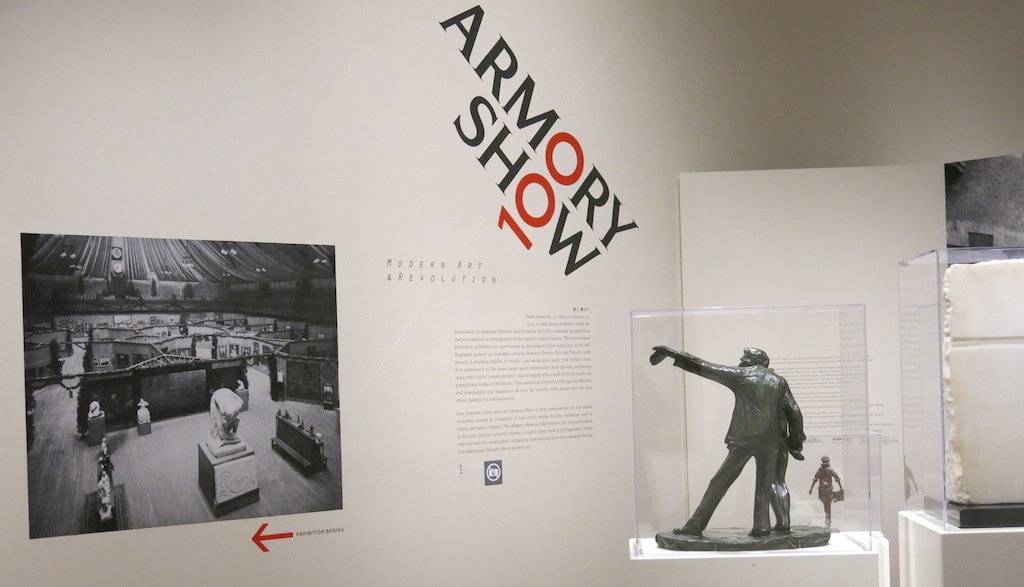The things they said, the epithets they used: “repellent, violent, insane, degraded, ugly, vulgar, repugnant, poseurs, charlatans, grotesque, indecent, unreasonable, deranged.” And all this about what are now regarded as some of the most iconic paintings of the 20th century painted by Matisse, Picasso, Kandinsky, Duchamp, and numerous other European and American avant-garde artists.
Or as art critic Kenyon Cox wrote, “The total destruction of the art of painting.”
It was 1913 and the Armory Show (officially known as the International Exhibition of Modern Art) had opened at New York City’s Lexington Avenue Armory for a month-long winter run that mirrored the zeitgeist.
The United States was at a crossroads: The four-party presidential election of 1912 had occurred alongside the ongoing suffragist movement and the fight for workers’ rights. New York City was building the world’s tallest skyscraper, the Woolworth Building, as well as the largest train station, Grand Central. The tango was the dance craze and Chaplin, Pickford, and Fairbanks were America’s biggest stars. Immigrants were pouring into the city from Ellis Island and seismic shifts were occurring in American politics, culture, and society.

The celebratory exhibition at the New-York Historical Society, “The Armory Show at 100: Modern Art and Revolution,” offers a recreation of the Armory Show’s original 18 octagonal spaces © MRNY
The celebratory exhibition at the New-York Historical Society, The Armory Show at 100: Modern Art and Revolution, offers a recreation of the Armory Show’s original 18 octagonal spaces, which were festooned with garlands, burlap, and pine trees, the symbol of the Armory Show that was based on the American Revolution.
Established as a response to the staid and academic exhibitions at the National Academy of Design, the 1913 Armory Show was conceived to exhibit the progressive art of American and European artists.
More than 100 works from the original Armory Show are featured in the centennial exhibition, including paintings by Matisse, Duchamp, Picasso, Childe Hassam, Albert Pinkham Ryder, alongside sculptures by Brancusi.
Historical documents and artifacts, along with archival photographs and film footage provide a context of American culture at the moment of the Armory Show.
In March of 2013, the United State Postal Service issued a series of stamps commemorating modern art in America, including a reproduction of Duchamp’s Nude Descending a Staircase, which was also the focus of a USPS stamp in 1998, albeit with an illustration of a couple gazing quizzically at Duchamp’s painting.
“The door to our century,” said Duchamp about the Armory Show – and the repercussions echo still. Now showing at the New-York Historical Society – one hundred years later.








